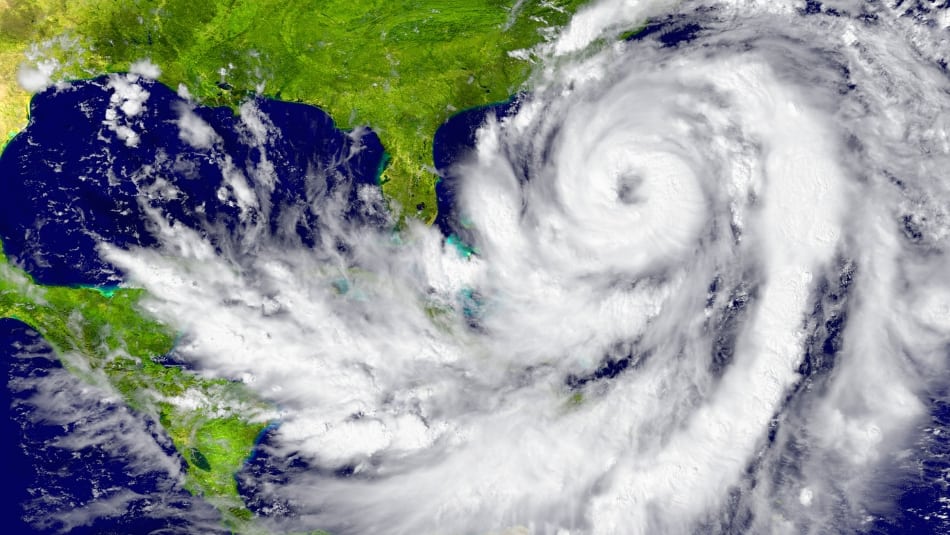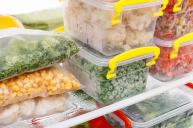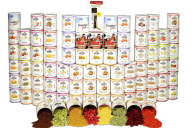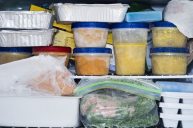September is National Preparedness Month, so hopefully you've already checked off everything on the FEMA prep list for natural disasters. If you haven't, go do that right now. We'll wait while you stock up on bottled water and a good first aid kit (don't forget, at least a three day supply of drinking water for every person in your house, any prescriptions medicines, pet food, and plenty of batteries and flashlights).
Videos by Wide Open Country
Okay, all set? Good, because far and wide across the United States, plenty of Americans are in the path of hurricane season. There are storm systems affecting Guam, Hawaii, and a large part of the East Coast, and of course, our friends on the Gulf Coast know how quickly a storm can turn into days of catastrophic flooding even after the eye has passed. There's a good chance that a lot of folks are going to be without power for a few days or more, so now is the time to start thinking about hurricane preparedness and no-electricity meals.
A few kitchen-related emergency supplies you'll want on hand for your hurricane kit are a manual can opener, hand sanitizer, paper plates and bowls, and plastic utensils, napkins or paper towels, and plastic cups (for both warm and cold drinks). If you can use it safely, having a small camp stove on hand makes all the difference in what kind of meals you can fix while the power is out, but a grill (once it's safe to go outside) works well, too.
View this post on Instagram
Stock your kitchen wisely for potential power outages; fresh fruit and vegetables are good but stick to things like apples, bananas, citrus fruits, cherry tomatoes, and carrots that last a few days and don't need to be cooked.
At the grocery store, a good tip is to look for lunch box friendly food. You'll find everything from shelf stable applesauce and fruit packets to individual boxes of milk and juice. It's good to keep a stash of these items in your hurricane food kit because they last a long time and you can eat them as needed (with no leftovers).
Here are some tips on what to buy and prep so that your kitchen is hurricane food ready, and how to follow good food safety rules when the power goes out.
Hurricane Food to Buy
View this post on Instagram
We promise hurricane food doesn't have to be peanut butter and crackers or freeze-dried meals. Peanut butter is definitely a good thing to have on hand (as long as it's not the natural kind that needs to be refrigerated), but here are a few other non-perishable food items to put on your shopping list.
The best foods to buy for your hurricane food kit are ones that last a long time and don't need to be cooked to be safe to eat. Canned foods, along with the newer boxed and sealed pouches, have a long shelf life and you can get everything from individual meal ingredients to complete meals.
Canned beans and canned tuna, salmon, or sardines can be added to salad, pasta, rice, and vegetables. You can also make your own white bean spread, black bean dip, or hummus to eat with veggies or pita bread. Canned fruit and vegetables are also good to have. If you've got a small camp stove, you can heat them up, but in a pinch, you can eat them at room temperature.
Jarred or boxed sauces can be added to pasta, rice, canned fish, or vegetables for flavor and to make a more complete meal. If you can heat it up, it'll taste better, but again, in a pinch, you can make do. Just remember that once an item is open, eat it right away. Soup (canned, boxed, or instant) is another easy to fix and eat emergency food.
Several brands also make meals in a pouch with foods that range from beans and rice to spicy Indian or Thai dishes. Especially if you've got a way to heat them up, adding a few of these to your emergency kit can make a no-power meal time much tastier.
Buy a few snack items like granola bars, chips, and popcorn. They're easy to share and they keep well, plus if you have to travel, they're good in the car.
Don't forget about beverages. You may want to have some instant coffee, tea, or hot chocolate, but make sure you have a way to get hot water. Juice is another good thing to keep on hand, though get individual bottles so you don't have to refrigerate it. Powdered milk or unsweetened canned milk is good to have as well, plus almond milk or other plant-based milk if you prefer.
Things to Prep Before the Storm
View this post on Instagram
Eggs
Boil eggs, but don't peel them. Hard-boiled eggs can be added to salads, sandwiches, or just eaten as is. If you want to keep fresh veggies on hand, do all the washing and prep first, in case you don't have water.
Bread
Bake hearty muffins or other bread, and maybe some cookies or a pound cake that can be frozen or keeps well. We often get so caught up in the emergency side of hurricane prep (and rightly so) that we forget about having a few comforting treats on hand.
Pasta
Cook rice or pasta for one or two meals that can be mixed easily with veggies, beans, or canned meat/fish once the power goes out. You can freeze the cooked rice, giving you another meal or two if you can keep your freezer cold.
Granola
Make a big batch of granola with dried fruit, nuts, and maybe even some chocolate. Stored in an airtight container, granola keeps for at least a week. You can also make your own trail mix, with nuts, dried fruit, coconut, and pretzels to eat as a snack.
Hurricane Food Safety
View this post on Instagram
If you think it's likely your power is going to cut out, there are a few things you can do to make your food last a bit longer. First, if it can be frozen, do that now; even things you don't normally freeze like milk, juice, muffins, and meat can extend your food stores. A full freezer (or refrigerator) takes longer to defrost, so you buy everything in your freezer extra time. Plus, if you plan ahead, you can pop the first things you plan to use from the freezer in the refrigerator right after the power goes out, helping the fridge stay colder longer, too.
Freeze empty milk, juice, or soda bottles (or reusable containers) with water and freeze them. After they're frozen and once the storm starts, you might put a few of those in the fridge before the power goes out, so when it does, you've already got ice inside.
Keep the fridge and freezer doors closed except when you absolutely have to get something out. You might even arrange the food so that what you need first or most is easiest to reach. You might also get a few smaller ice chests and be ready to divide your hurricane food up into meals, only opening the ice chest for each meal as needed. However you keep your food cold, keep track of the temperature and time so you know when the food is no longer safe to eat.
Don't use a camp stove indoors unless the box clearly notes it's safe for indoor use; make sure you have good ventilation while the stove is being used.




